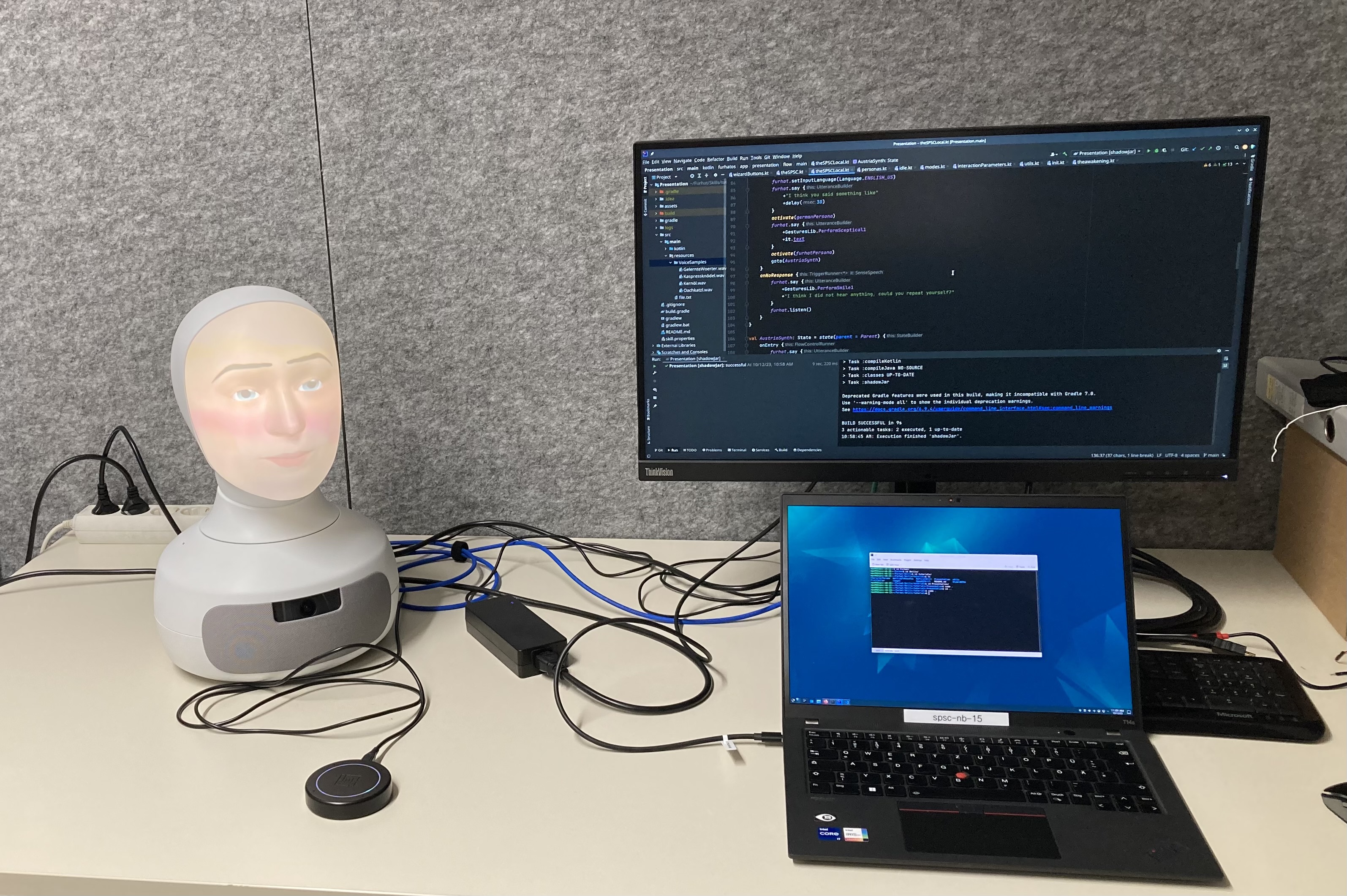Furhat -- Interaction with a Social Robot
- Status
- Open
- Type
- Master Project
- Announcement date
- 18 Oct 2023
- Mentors
- Research Areas
Short Description

Spoken face-to-face communication is a central component of interaction with social robots in the future. Furhat, developed at the Stockholm-based startup Furhat Robotics, is one of the most advanced social robots and recently became “member” of the SPSC Laboratory. In order to communicate with humans, it makes use of information from spoken information and of visual information in the form of facial expressions, lip movement and gaze. At our department we currently have two focuses of investigation that would also give a good opportunity to conduct a student project (at bachelor or master level):
1) We are interested in learning more about the turn-taking aspects of the interaction, where turn-taking refers to how speakers (and in this case a speaker and a robot) take turns in talking. In more detail, we are interested in analyzing timing aspects (lenth of pauses, reaction times, response-utterance lenghts, etc.) of turn-taking in machine-human and human-human conversation and to use this information to improve the conversational flow. One aspect of turn-taking is to learn Furhat to “produce backchannels”, i.e., to say something like “mhm, aha, a jo” in the right moment in order to be perceived by the human as a more authentic listener.
2) Another aspect of machine-human interaction is not only to make the social robot’s behaviour more natural, but also to increase the naturalness of the humans interaction with the robot. One can assume that the more naturally and smoothly the interaction with the social robot flows, the more naturally the human will dare to speak to the robot. In order to investigate the human’s way of speaking, we plan to record humans while speaking to Furhat in different “naturalness” conditions and to compare produced speech of the humans to data from human-human conversations.
Teams of 2-3 students are welcome!
Your Tasks (depending on specific project):
- Programming of interactions with Furhat
- Design of Experiments
- Conduction of Experiments and/or Recording Speech-interactions with Furhat
- Analysis and reporting your results (thesis writing)
Your Profile
- basic knowlegde of sound engineering and/or speech communication
- good knowledge of programming (e.g., Python, additional advantage with Kotlin know-how)
Contact:
Barbara Schuppler (b.schuppler@tugraz.at) Martin Hagmüller (hagmueller@tugraz.at)
